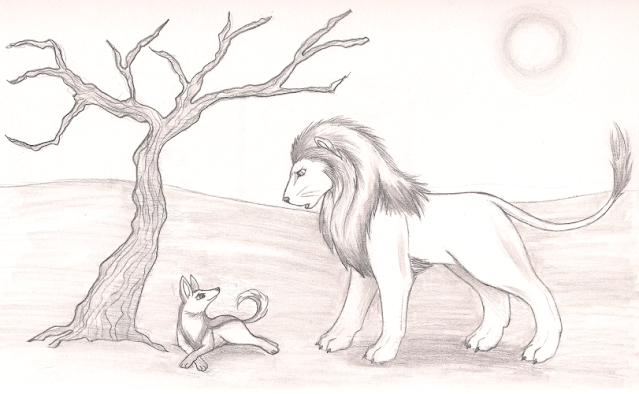The best places to visit in Kenya
Kenya
The Africa of our dreams and the Jewel in East Africa’s Crown, Kenya is perhaps the Africa that comes to mind when we think of or hear the word ‘Africa’; It’s the lone acacia silhouetted on the savannah against a horizon stretching into eternity. It’s the snow-capped mountain almost on the equator and within sight of harsh deserts. It’s the lush, palm-fringed coastline of the Indian Ocean, it’s the Great Rift Valley that once threatened to tear the continent asunder, and it’s the dense forests reminiscent of the continent’s heart. In short, Kenya is a country of epic landforms that stir our deepest longings for this very special continent.
The Africa of our dreams and the Jewel in East Africa’s Crown, Kenya is perhaps the Africa that comes to mind when we think of or hear the word ‘Africa’; It’s the lone acacia silhouetted on the savannah against a horizon stretching into eternity. It’s the snow-capped mountain almost on the equator and within sight of harsh deserts. It’s the lush, palm-fringed coastline of the Indian Ocean, it’s the Great Rift Valley that once threatened to tear the continent asunder, and it’s the dense forests reminiscent of the continent’s heart. In short, Kenya is a country of epic landforms that stir our deepest longings for this very special continent.
- Nairobi
The capital of Kenya and the heart of East Africa
- Uhuru Park
Commemorates Kenya’s independence from the UK
- Nairobi national park
The premiere national park of Kenya’s capital
- National Museum
Showcases the prehistory, history, people, cultures and wildlife of Kenya - Mombasa
The white and blue city of Kenya
- Sri Kutch Satsang Swaminarayan Temple
A representation of the Indians of Kenya and a tribute to the Hindu God Vishnu
- Diani Beach
East Africa’s leading beach destination
- Samburu national park
Where wildlife warden George Adamson raised an orphaned Lioness whom he named Elsa - Masai Mara
The northern continuation of the Serengeti in Tanzania which was in turn created by the Ngorongoro Crater. Has more Lions than anywhere else in Kenya - Kimana national park
Links Amboseli with the Chyulu Hills - (Lake) Nakuru national park
A Rhinoceros' Paradise - Amboseli national park
Where the Elephant is King not the Lion
The End
The Big Five (Special)
For most people, visiting Africa is to view the Big Five, a term invented by hunters to describe the five most dangerous animals to hunt, Elephant, Lion, Buffalo, Leopard and Rhinoceros. Today however the Big Five are more of a tourist attraction and are recognized more for their magnificence rather than their dangers. Shooting of them is done with a camera not a gun
For most people, visiting Africa is to view the Big Five, a term invented by hunters to describe the five most dangerous animals to hunt, Elephant, Lion, Buffalo, Leopard and Rhinoceros. Today however the Big Five are more of a tourist attraction and are recognized more for their magnificence rather than their dangers. Shooting of them is done with a camera not a gun
- Elephant
Loxodonta Africana
Swahili name: Tembo
The world's largest land animal, and the biggest of the Big Five the African Elephant is one of the most enduringly exciting animals encountered on any African safari. The Elephant is famous not only for his imposing bulk but also for his complex social behaviour as two unique adaptations of Elephants are a long trunk which is a combination of the nose and the upper lip that combines immense strength with the sensitivity to isolate and tear out a single blade of grass to eat and outsized tusks that grow throughout their lives sometimes reaching lengths in excess of 3m (10 ft) - Lion
Panthera Leo
Swahili name: Simba
The largest of the big cats in Africa and the icon of the Big Five, the African Lion is the most sociable and less secretive of all cats. He is unusual among cats in that he rarely or seldom takes to the trees and that an adult male sports a regal blond to brown or black mane. For many people the majestic 'King of the Animals' is the ultimate safari icon so much that it is easy to forget that Lions once roamed throughout Asia as well as Europe and Greece in addition to Africa. Today the Lion is restricted to Southern and East Africa in addition to a small population of the Asiatic or Indian Lion found only in the Gir Forest of Gujarat in Western India. While common and conspicuous in several Kenyan reserves, Lions are in decline elsewhere with Africa's Lion population having seen a 75% decline since 1990 - Buffalo
Syncerus Caffer
Swahili name: Nyati
The only member of the cattle family in Africa, the African Buffalo is similar to domestic Asian buffalo and closely related to domestic cattle. Powerfully built with a bulk of 900 kg (1,764 lb) and heavy splayed horns, he is famed for his unpredictable temperament. Indeed hunters regard the Buffalo as the most dangerous of animals even though animals such as the hippopotamus and crocodile have taken far more human lives. Buffalo are the most numerous of the Big Five with a continent-wide population estimated at over 1 million and are highly conspicuous on most Kenyan safaris - Leopard
Panthera Pardus
Swahili name: Chui
Paradoxically the most abundant and elusive of Africa's large predators, the Leopard is the most beautiful of the cats, distinguishable by his rosette-patterned coat, powerfully pugilistic physique and preference for dense cover. This determinedly nocturnal cat is a supreme solitary hunter after the equally majestic Lion, capable of creeping within a few feet of prey before a pounce. Despite widespread persecution for their fur and taking livestock, the global Leopard population remains in good shape comprising an estimate 500,000 individuals ranging across Southern and East Africa and tropical Asia - Rhinoceros
Diceros Bicornis (Black) and Ceratotherium Simum (White)
Swahili name: Chui
With his grey hide, massive bulk, fearsome horns and irascible disposition, the Black Rhinoceros is one of the most ancient surviving branches of the ungulate line. He stands on the brink of extinction with his continental population having plummeted from 100,000 to 2,500 over 20 years before the early 1990s thanks to poaching for their horns which are erroneously believed to have medicinal properties. The situation has improved slightly since then but the Black Rhinoceros remains among the most critically endangered of African animals. Kenya supporting around 15% of the global total is now possibly the best place to see Black Rhinos. Bulkier than the Black Rhinoceros, the White Rhinoceros is held to be the second largest land animal after the Elephant, weighing up to 3,600 kg (7,937 lb) but is generally a more docile and peaceable animal. Misleadingly named, the White Rhinoceros is not white anymore than the Black Rhinoceros is black; in fact both are the same colour. The misnomer 'white' is derived from the Dutch-Afrikaans word 'weit' which means wide-lipped to describe the Rhinoceros' lips as compared to the hook-like lips of the Black Rhinoceros and the name became 'white'. The lips of the White Rhinoceros help in cropping up their main diet which is grass while the lips of the Black Rhinoceros are efficient in browsing a whole variety of plants. Prehistoric African rock art and skeletal remains indicate that White Rhinos once occurred throughout the African continent but their historical range comprises two geographically and discrete populations, the Southern White Rhinoceros and the Northern or Eastern White Rhinoceros. The Southern White Rhinoceros which is numerous in South Africa and Namibia was saved from the brink of extinction in the early 1900s now numbers some 12,000 animals in the the wild all descended from a bottleneck population of fewer than 30 individuals, some of which have been introduced into Kenya and Uganda. The Northern White Rhinoceros however is the rarest and most endangered of all Rhinos
References
- Insight Guides Kenya
- DK Eyewitness Travel Guides Kenya
- Rough Guide to Kenya
- Expoza Travel - Kenya
- Expoza Travel - Amboseli national park
- Expoza Travel - Masai Mara
- Expoza Travel - Nakuru national park
- Africa's Big Five
- The national parks of Africa - East Africa





Comments
Post a Comment